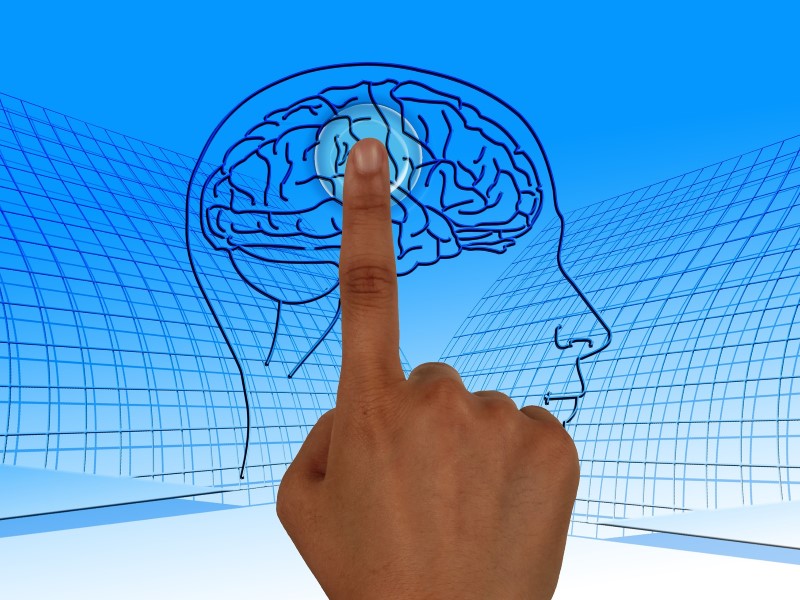- Home
- Science
- Science News
- Researchers Probe How Humans Recognise Images Better Than Computers
Researchers Probe How Humans Recognise Images Better Than Computers

Scientists from the Weizmann Institute of Science in Israel and the Massachusetts Institute of Technology (MIT) suggests that there is something elemental in our brains that is tuned to work with a minimal amount of information.
That elemental quantity may be crucial to our recognition abilities and incorporating it into current models can prove valuable for further research into the workings of the human brain and for developing new computer and robotic vision systems.
To understand this, professor Shimon Ullman and Dr Daniel Harari, together with Liav Assif and Ethan Fetaya, enlisted thousands of participants from Amazon's "Mechanical Turk" (AI programme) and had them identify a series of images.
When the scientists compared the scores of the human subjects with those of the computer models, they found that humans were much better at identifying partial- or low-resolution images.
Almost all the human participants were successful at identifying the objects in the various images up to a fairly high loss of detail - after which, nearly everyone stumbled at the exact same point.
"If an already minimal image loses just a minute amount of detail, everybody suddenly loses the ability to identify the object," Ullman noted.
"That hints that no matter what our life experience or training, object recognition is hardwired and works the same in all of us," he added in a paper published in the journal Proceedings of the National Academy of Sciences (PNAS),
The researchers suggest that the differences between computer and human capabilities lie in the fact that computer algorithms adopt a "bottom-up" approach that moves from simple features to complex ones.
Human brains, on the other hand, work in "bottom-up" and "top-down" modes simultaneously, by comparing the elements in an image to a sort of model stored in their memory banks, the authors noted.
Catch the latest from the Consumer Electronics Show on Gadgets 360, at our CES 2026 hub.
Related Stories
- Samsung Galaxy Unpacked 2025
- ChatGPT
- Redmi Note 14 Pro+
- iPhone 16
- Apple Vision Pro
- Oneplus 12
- OnePlus Nord CE 3 Lite 5G
- iPhone 13
- Xiaomi 14 Pro
- Oppo Find N3
- Tecno Spark Go (2023)
- Realme V30
- Best Phones Under 25000
- Samsung Galaxy S24 Series
- Cryptocurrency
- iQoo 12
- Samsung Galaxy S24 Ultra
- Giottus
- Samsung Galaxy Z Flip 5
- Apple 'Scary Fast'
- Housefull 5
- GoPro Hero 12 Black Review
- Invincible Season 2
- JioGlass
- HD Ready TV
- Laptop Under 50000
- Smartwatch Under 10000
- Latest Mobile Phones
- Compare Phones
- OPPO Reno 15 Pro Max
- Honor Win RT
- Honor Win
- Xiaomi 17 Ultra Leica Edition
- Xiaomi 17 Ultra
- Huawei Nova 15
- Huawei Nova 15 Pro
- Huawei Nova 15 Ultra
- Asus ProArt P16
- MacBook Pro 14-inch (M5, 2025)
- OPPO Pad Air 5
- Huawei MatePad 11.5 (2026)
- Xiaomi Watch 5
- Huawei Watch 10th Anniversary Edition
- Acerpure Nitro Z Series 100-inch QLED TV
- Samsung 43 Inch LED Ultra HD (4K) Smart TV (UA43UE81AFULXL)
- Asus ROG Ally
- Nintendo Switch Lite
- Haier 1.6 Ton 5 Star Inverter Split AC (HSU19G-MZAID5BN-INV)
- Haier 1.6 Ton 5 Star Inverter Split AC (HSU19G-MZAIM5BN-INV)

















